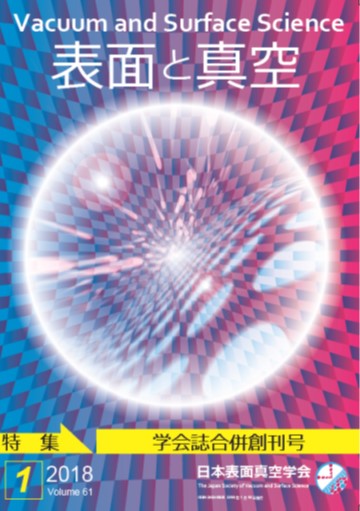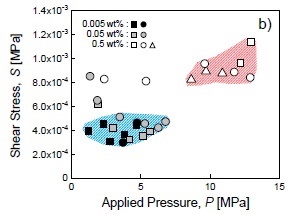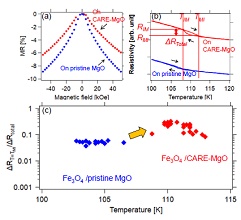Volume 65, Issue 7
Special Feature : Transactions of the Annual Meeting on the Japan Society of Vacuum and Surface Science 2021[I]
Displaying 1-10 of 10 articles from this issue
- |<
- <
- 1
- >
- >|
Preface
-
Article type: Preface
2022 Volume 65 Issue 7 Pages 301
Published: July 10, 2022
Released on J-STAGE: July 10, 2022
Download PDF (323K)
Special Feature : Transactions of the Annual Meeting on the Japan Society of Vacuum and Surface Science 2021[I]
-
 Article type: Current Topics
Article type: Current Topics
2022 Volume 65 Issue 7 Pages 302-308
Published: July 10, 2022
Released on J-STAGE: July 10, 2022
-
Article type: Current Topics
2022 Volume 65 Issue 7 Pages 309-314
Published: July 10, 2022
Released on J-STAGE: July 10, 2022
Download PDF (3275K) -
Article type: Current Topics
2022 Volume 65 Issue 7 Pages 315-320
Published: July 10, 2022
Released on J-STAGE: July 10, 2022
Download PDF (1992K) -
Article type: Review
2022 Volume 65 Issue 7 Pages 321-326
Published: July 10, 2022
Released on J-STAGE: July 10, 2022
Download PDF (7764K)
Science Café
Introducing our New Ph.D.
-
Article type: Science Café
2022 Volume 65 Issue 7 Pages 327
Published: July 10, 2022
Released on J-STAGE: July 10, 2022
Download PDF (1072K)
Research Abroad
-
Article type: Science Café
2022 Volume 65 Issue 7 Pages 328-329
Published: July 10, 2022
Released on J-STAGE: July 10, 2022
Download PDF (922K)
Diversity Promotion
-
Article type: Science Café
2022 Volume 65 Issue 7 Pages 330-331
Published: July 10, 2022
Released on J-STAGE: July 10, 2022
Download PDF (685K)
Memorial
-
Article type: Memorial
2022 Volume 65 Issue 7 Pages 332-333
Published: July 10, 2022
Released on J-STAGE: July 10, 2022
Download PDF (347K)
News & Trends
-
Article type: News & Trends
2022 Volume 65 Issue 7 Pages 334
Published: July 10, 2022
Released on J-STAGE: July 10, 2022
Download PDF (310K)
- |<
- <
- 1
- >
- >|




